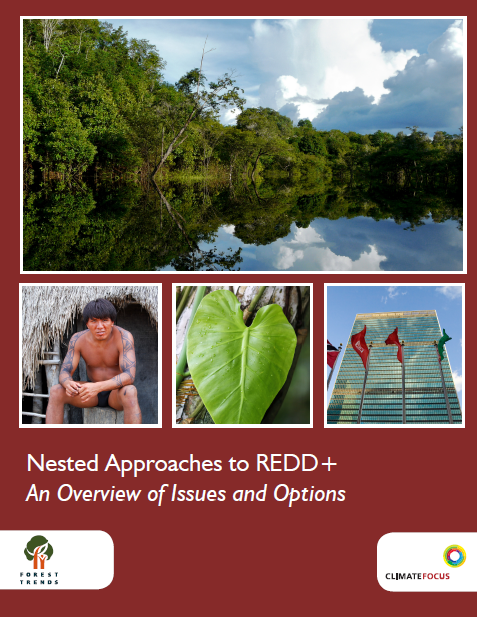Nested Approaches to REDD+ An Overview of Issues and Options
Summary
In international climate negotiations there is consensus that the climate benefits from Reducing Emissions from Deforestation and Forest Degradation, sustainable forest management, conservation, and enhancement of forest carbon stocks (REDD+) will ultimately be measured and rewarded based on national-level accounting systems. Working towards this goal is a principal focus of current REDD+ readiness funding. In the meantime, public and private demonstration projects are already being implemented that reduce greenhouse gas (GHG) emissions at the subnational or project level, while countries develop national policies, data, and capacities. As international and national REDD+ frameworks develop, these subnational activities will need to be brought under broader accounting frameworks to ensure that any carbon credits issued to projects or programs “add up”—maintaining environmental integrity while catalyzing action at multiple scales of implementation. Integrating different local and national levels of action has come to be referred to as “nesting” and is important for a number of reasons. First, incentives need to be placed at the appropriate level of governance. While broader policy reforms may take years to be implemented, REDD+ action may be developed faster at the regional or project level, delivering near-term reductions in emissions. Secondly, the project level is a key entry point for private sector engagement and may provide important options for direct community-level engagement with REDD+. Finally, subnational activities are a critical piece of emerging national frameworks for REDD+ management and accounting. Establishing local investment mechanisms, and measurement, reporting and verification (MRV) capacity in advance of national frameworks is providing valuable experience to inform broader architectures and capacity. The term “nesting” is variously used to refer to state- and province-level accounting integrated into national level systems, as well as to project-level activities sitting within broader national (or subnational) systems. Both types of nesting are critically important and some of the most significant progress to date on developing compliance systems is being led by states and provinces (e.g., under the Governors’ Task Force on Climate and Forests, a subnational collaboration between 15 states and provinces). However, this briefing document focuses on the discrete set of issues and options for nesting project-level activities within broader frameworks under the assumption that the issues will be broadly similar if the broader jurisdiction in which projects sit are national or subnational. The document aims to explain relevant technical and regulatory aspects that require further clarification (and simpler explanation) so that REDD+ design options for the integration of different levels of governance can be more easily understood and applied nationally and internationally. This briefing document is structured as follows. Section 2 provides a brief overview of relevant REDD+ developments at the international level. Section 3 presents some initial strategic considerations that place nested forms of REDD+ as an instrument within the context of broader domestic policies and measures. Section 4 addresses policy options for the design of nested approaches to REDD+. Here we consider a range of technical, regulatory, institutional, and economic aspects that may affect nested approaches and influence their design at the national level.


 Twitter
Twitter Google+
Google+ Facebook
Facebook LinkedIn
LinkedIn Digg
Digg del.icio.us
del.icio.us StumbleUpon
StumbleUpon